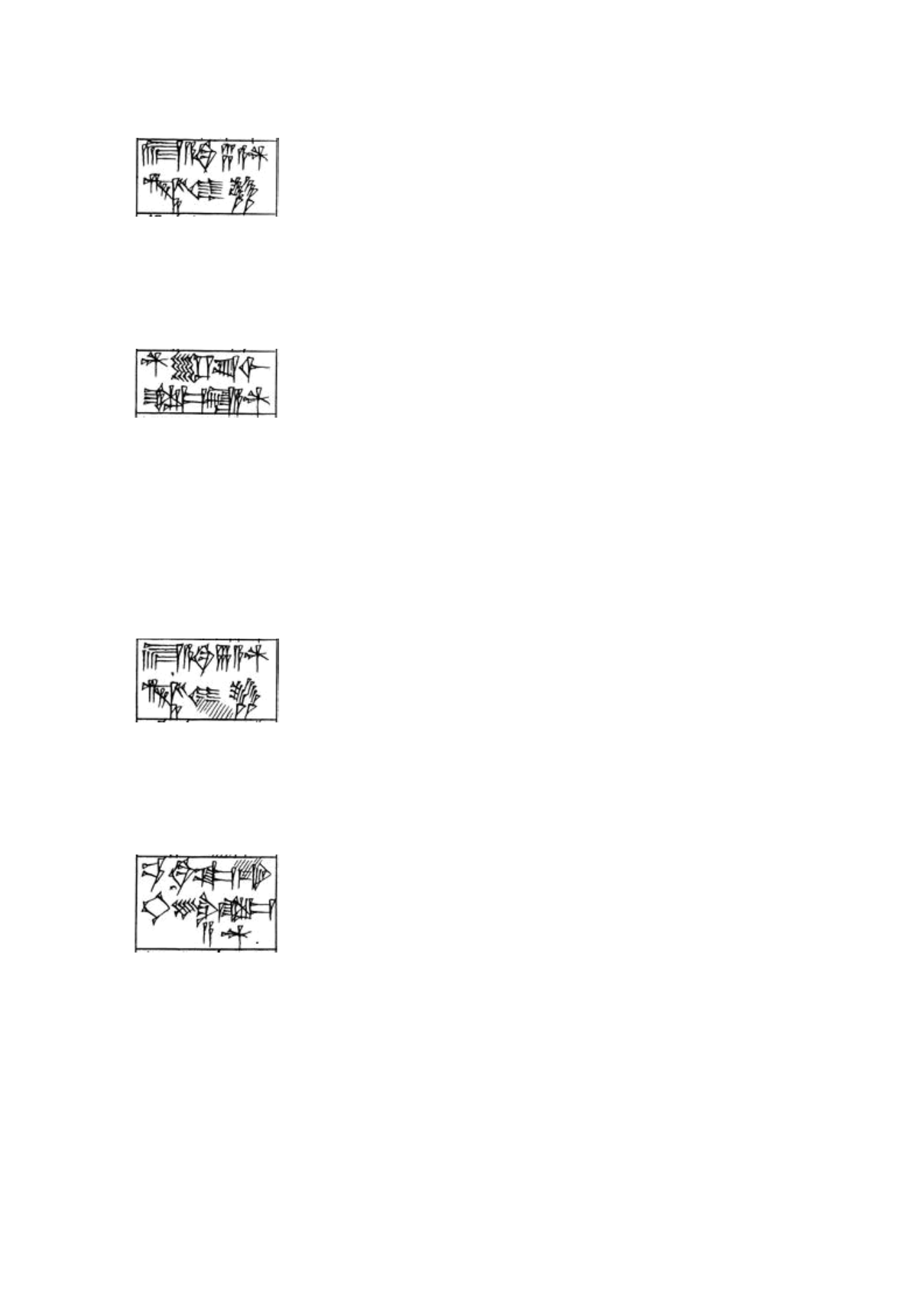

237
Gudea di Lagash – La costruzione del tempio di Ninjirsu - Cilindro A
A XXI.7 - 572
e
2
.a sa
2
5.am 3nam.mi.sig
10
e
2
.a sa
2
5.am 3na.i
3
.mi.n.sig
10
Nel tempio un quinto quadrato tracciò:
Vedi A XXI.1
A XXI.8 - 573
an nisig su.lim il
2
.la.am 3[an nisig su.lim il
2
.a].am
3
è il cielo blu in tutto il suo splendore.
nisig (nisi) : sostantivo: “greens, vegetables (nij
2
, 'valuables', + sig
7
, 'green, yellow')” (SL), “herbe,
végétation” (PLS.112); “greenery, vegetable(s)” (PSD2.195); qui però aggettivo “beautiful; blue; green”
(SL), “beau, brillant” (PLS.112). Dovrebbe trattarsi del segno SAR, ŠAR (MEA.152)
su.lim il
2
.a : lett. “che porta lo splendore”, “der Schreckenglanz trägt” (GSG1.134); su.lim: “awesome
radiance, splendor (Akk.
šalummatu
,
šalummu
)” (SL; PSD2.223); il
2
.a è participio (GSG2.72) di il
2
“portare” (vedi A I.2)
A XXI.9 - 574
e
2
.a sa
2
6.am 3nam.
[
mi
]
.sig
10
e
2
.a sa
2
6.am 3na.i
3
.mi.n.sig
10
Nel tempio un sesto quadrato tracciò:
Vedi A XXI.1
A XXI.10 - 575
ud sa
2
.dug
4
.
[
ga
]
hi.ligur
3
.am
3
[[ud sa
2
.dug
4
].ak
hi.ligur
3
.a].am
3
è il giorno delle offerte, che porta abbondanza.
[[ud sa
2
.dug
4
(du
11
)].ak: “ein Tag der regelmässigen Opfer” (GSG1.65), con marker del genitivo (GSG1.93);
sa
2
-dug
4
/du
11
[DI.KA]: “a capacity measure, = 24 sila
3
in Presargonic Girsu and 40 sila
3
starting with
Akkad period; regular "tithe" or "offering" important to the temple economy ('to equal in value' + 'to
effect')” (SL); “offrande régulières; mesure de capacité” (PLS.120, dove legge sa
2
.du
11
), “regular temple
offerings” (PSD2.205, dove dà entrambe le letture del segno [KA]); accadico
sattukku
“regular delivery,
regular offering”
hi.li: “beauty; (sexual) charm, appeal; luxuriance ('numerous' + 'cedar oil, fragrance')” (SL); “plénitude;
délices; attrait sexuel” (PLS.70) ; “sex appeal ; (to be) luxuriant ; to have pleasure” (PSD2.110)
gur
3
: “to bear, carry; to be full, loaded, laden” (SL), “porter, transporter; être plein” (PLS.61); gur
3
.a è un
participio nominalizzato: “der Üppigkeit trägt” (GSG1.134; GSG2.72); lo stesso segno potrebbe anche
leggersi il
2
“portare” (cfr. A XXV.27)
















